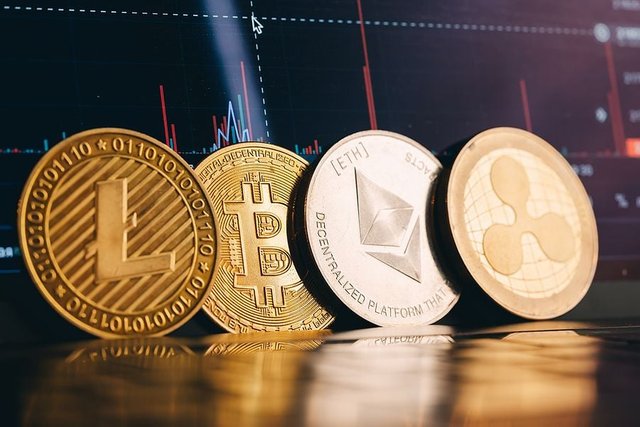
Every beginner cryptocurrency trader or investor has to get through the steep learning curve of learning the confusing terminology surrounding digital currencies. But one pair of frequently overlooked terms often elude learners because we often assume we already know what they are – until you actually notice places like cryptocurrency exchanges and news articles using them to mean different things. And these are terms you probably see all the time: coins and tokens.
Coins and tokens are both units that people use to measure cryptocurrency. Both signify value and can be exchanged for goods or other currencies. For example, you can trade X number of coins, or X number of tokens.
Where the cryptocurrency world is concerned, coins and tokens both run on blockchain technology – digital ledgers that are used to record transactions transparently and securely. Both coins and tokens have many overlaps in meaning, so much so that many think they are just two different words to mean the same thing.
However, there are some differences – especially when it comes to their properties and functions – that make coins and tokens quite distinct from each other.
- Coins are money; tokens are not
A factor that sets cryptocurrency coins apart from tokens is its value proposition. The value of cryptocurrency coins is based on their utility as a store of value and a medium of exchange since they are made to be used as a form of currency. Cryptocurrency coins have a fixed supply – primarily intended to ensure scarcity and preserve the value of the currency.
However, tokens are often designed with a specific purpose in mind, such as to signify ownership in a business, use in a decentralised application, or access to a certain service. As such, the value of tokens is determined by their underlying asset or the value of the platform they are linked to, not by their utility as a currency.
- Cryptocurrency coins are native to a blockchain
The pillar of virtually all cryptocurrencies today is blockchain technology. True cryptocurrency coins are built on their own blockchain technology, like how Bitcoin runs on its own blockchain and Ether runs on the Ethereum blockchain. Coins and their blockchain are designed hand-in-hand, and you can’t have one without the other.
In contrast, tokens are created and transacted on existing blockchain platforms. For example, cryptocurrencies like Tether, USDC, Shiba Inu, and DAI Stablecoin all run on the Ethereum network. Transferring tokens from one person to another are based on smart contracts, self-executing contracts built into the blockchain system. For example, Ethereum’s smart contract system is called ERC-20, while NEO uses Nep-5.
As a side effect of this distinction between coins and tokens, you’ll find that there are vastly more tokens than cryptocurrencies simply because it is easier to create a token based on a blockchain that already exists rather than create a whole blockchain and coin from scratch.
- Cryptocurrency can be mined
Notice how Bitcoin and Ether have a limited supply and need to be mined before they can be in circulation? Two ways of mining crypto coins are through the proof of work (PoW) mechanism or the proof of stake (PoS) mechanism.
Tokens, however, are usually pre-mined – meaning that the entire supply is already in circulation at the token’s point of launch.
Conclusion
With a better understanding of cryptocurrency coins and tokens, you can now make better sense of discussions surrounding crypto and make better trading decisions. But for us here at Coinut, the distinction is minimal because we facilitate the trading of both types of assets.
Coinut is a crypto trading platform which offers some of the best Bitcoin, Ethereum, and Litecoin prices in Singapore thanks to our low commission fees. Join over a million users on our platform to enjoy fast-speed trading, a user-friendly interface, and real-time crypto news and updates!
RISK DISCLOSURE: ⚠️
Digital payment token investments, such as cryptocurrencies, are not guaranteed by service providers or cryptocurrency exchanges and the government. It is crucial to exercise caution in investing, including the awareness that a part or all of the capital may be lost and may not be recovered especially in cases of high price volatility or down market, bankruptcy, seizures and other factors. Hence, the user’s risk tolerance, investment appetite or capacity for loss should be set firstly and they should observe safe and knowledgeable investment practices accordingly. For more information, please visit MAS' website.